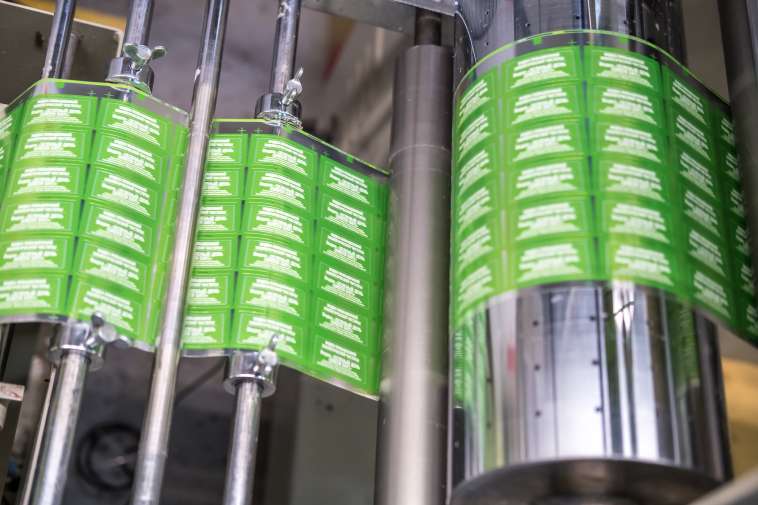Mastering Change Management in MES implementations: a blueprint for success
Yves Bourgeois on , updated
For production companies aiming to thrive in today’s competitive market, MES implementation is not merely an option but a necessity. Here’s how to effectively manage transformation to agile manufacturing, and implement an MES that drives strategic value for the organisation.

Why change is inevitable in Industry 4.0
Production companies are constantly seeking innovative solutions to enhance their operational efficiency, reduce costs, and remain competitive. One crucial solution is the implementation of a Manufacturing Execution System (MES).
Manufacturing Execution Systems bridge the gap between the production floor and the company management, providing real-time data insights into production processes, quality control, traceability, and resource utilisation.
For that reason, an MES is an instrumental tool for any manufacturing company aiming to improve operational efficiency, reduce lead times, enhance quality and yield, and achieve compliance with industry and regulatory standards.
However, harnessing these advantages requires more than just IIoT technology – it also demands effective change management.
In this article, we will dig deep on the role of change management to the success of an MES rollout, how to overcome resistance to change, and share advice to secure fast and long-term adoption on the shop floor.
Blog post summary:
- Change management: always imperative, often neglected
- The ADKAR model: a structured approach to change
- Step 1: Awareness of the need for change
- Step 2: Desire to participate in the change
- Step 3: Knowledge on how to change
- Step 4: Ability to implement skills and behaviours
- Step 5: Reinforcement to sustain the change
- The importance of leadership in times of change
- Additional tips to ensure lasting change on the work floor
Change management: always imperative, often neglected
Successfully managing change requires a structured approach to transitioning both individuals, teams, and organisations from their current states to desired future states. It’s a critical component of any MES implementation. However, despite its importance, change management is often overlooked.
Successful organisational change implies that people understand and embrace the new processes and technologies, leading to faster adoption, increased productivity, reduced downtime, and ultimately, a higher ROI.
When MES projects fail, it is usually because of a disconnect between the people involved with the change. Resistance to change within the workforce is however completely natural, and can be managed effectively.
Without change management, even the most advanced technology can falter in its potential to revolutionise manufacturing operations.
To get you started, the ADKAR Model provides you with a framework for managing change, by focusing on the different stages of transformation.

The ADKAR model: a structured approach to change
The ADKAR Model – which stands for Awareness, Desire, Knowledge, Ability, and Reinforcement – is a valuable tool to guide your transformation to agile production, unlocking a world of benefits at each step.
This model, developed by Jeff Hiatt in 2006, focuses primarily on individuals because successful change primarily happens at the personal level as people progress through stages of acceptance and action.
Step 1: Awareness of the need for change
Effective communication is the bedrock of successful change management. Start with ensuring that people understand why change is happening.
Don’t just communicate the objectives of the implementation, but also how it will benefit the organisation, and the expected timeline. This will make employees feel more involved, and boost their motivation to adapt.
Start an open discussion
Encourage open dialogue and address concerns promptly to build trust. For example, employees may worry about how new technology could make their jobs redundant. Tackling these issues early-on is always the best way to go.
First identify the sources of employee resistance – whether it is the fear of losing their jobs, a lack of understanding, or concerns about increased workload – and tailor your strategies to address these specific concerns.
Step 2: Desire to participate in the change
Grow a desire for change by involving employees in the development and implementation process. Allow them to voice their concerns and expectations around the MES. Show them how it will positively impact their daily tasks.
For instance: explain to production employees how operator-friendly screens and a paperless workflow will make their day-to-day duties less stressful, reduce miscommunication, decrease errors, and improve decision-making.
This inclusive approach cultivates a workforce that is more eager to embrace digital transformation, leading to improved job satisfaction and more willingness to actively participate in the implementation process.

Step 3: Knowledge on how to change
Equip employees with the knowledge required to operate the MES effectively from the start. Provide training programs that cater to the needs of different employee groups and their specific job roles, and their digital maturity level.
Training efforts should be ongoing, covering both the technical aspects of the system, and the new processes it introduces. Ensure the training is hands-on, engaging, and includes practical exercises.
Feeding employees with knowledge empowers them to harness the software’s full capabilities, which in turn results in employees with enhanced skills and better problem-solving abilities. And who wouldn’t want more of those?
Step 4: Ability to implement skills and behaviours
When faced with radical change, employee fatigue can quickly set in. Thus, it’s imperative to keep providing both new and current employees with the necessary training and resources to effectively navigate the MES.
When employees have the ability to use the MES effectively, it becomes an integral part of their work routine, leading to improved processes and quality.
Offer continuous support and feedback, encourage peer learning, and create a helpdesk for quick issue resolution as they adapt to the new technology, discover new possibilities, and more advanced questions arise along the way.
Step 5: Reinforcement to sustain the change
Transparency and regular updates are key to sustain change.
Regularly reinforce the benefits of MES through success stories, celebrate achievements, and provide continuous feedback. Monitor performance, and make improvements as necessary.
By reinforcing the positive outcomes of the MES, you can foster a culture of continuous improvement on the work floor, where employees actively seek ways to maximise the system’s potential.
Continuous learning opportunities and feedback mechanisms will empower employees to embrace the change, and make the most of the MES system.
This iterative approach not only allows for continuous improvement of processes, it also ensures that the MES remains aligned with evolving needs.

The importance of leadership in times of change
Change is best carried out when it’s openly supported by the leadership, as their endorsement signals MES implementation is a top priority. Leaders committed to change can also make timely decisions on MES-related issues, preventing delays and bottlenecks during implementation.
Leadership support is also vital for providing direction, resources, and a conducive environment for MES implementation. It helps align the initiative with organisational goals, facilitates change management, and ensures a commitment to the project’s success from top to bottom in the organisation.
Finally, MES implementation is not just about immediate gains but also about long-term success. Leadership support ensures that the MES remains a strategic asset, and keeps evolving to meet changing business needs.
FactryOS
Meet the most user-friendly MES platform in the Industry 4.0 market.
Factry tips to identify, address and mitigate employee resistance to change
With the ADKAR Model, you get an outcome-oriented approach that will help you reduce resistance to organisational change, and make a lasting impact.
Here are some additional tips, rooted in the personal experience of our team, to help you succeed:

Leverage the value of workfloor ambassadors
Workfloor ambassadors, often employees who are eager for change, can play a pivotal role in facilitating a smooth transition to a new way of working.
Key users on the manufacturing floor should be encouraged to actively participate in the development processes. They can provide valuable user feedback based on their experiences, and the experiences of their peers.
Workfloor ambassadors can also serve as mentors, helping their colleagues adapt to the new system. Their firsthand experience and guidance can be enormously useful to bridge the gap between resistance and acceptance.
Take the Belgian ice cream producer Jacques IJs, for example. Before, they were struggling with paper processes and manual data collection. In 2020, they decided to digitise their operations using our MES platform FactryOS.
By assigning key users and involving them early-on in the development process, they have managed to maximise user adoption from day one. They took the effort, and personally guided employees throughout the change.
In the beginning of the project, we tested out many visual components to make sure we were heading in the right direction. Updates were quickly shared and reviewed by a panel of key users, so we could make adjustments early on. As a result, adoption went smoothly. Even today, operators keep being involved in improving the user interface. This often results in small improvements, such as adding a button or integration.
Pieter Schuermans
IT Manager at Jacques IJs
As a result, user adoption of the MES has skyrocketed from day one.
For digital transformation to be successful in the long run, it is important to demonstrate operators the benefits, and the problems it solves for them. Before implementation, we have set up a demo to show them how it works. Whenever a functionality is added, we highlight the possibilities.
Yves Hemelaers
Production Planner at Jacques IJs

Post-implementation feedback and iterations
Once you’ve implemented the MES platform, and employees start working with the software, the job is far from over yet. In fact, sustaining change often becomes the most challenging phase of an MES implementation.
Here’s how to maximise your chances to success:
-
Post-implementation feedback - Maintain open lines of communication between a core project team and employees, seeking their feedback and addressing concerns promptly.
-
Celebrate successes - Regularly analyse KPI data and share the results with employees. Recognize and celebrate achievements to reinforce the positive impact of the MES.
-
Foster a culture of continuous improvement - Set KPIs and regularly assess and adjust MES performance to identify areas for enhancement.
-
Build a knowledge management system that documents best practices, and lessons learned. Continuously train new employees on the MES.
Ready to make a change on the production floor?
In conclusion, MES implementation is more than just a technological upgrade. It’s a cultural shift within your organisation. A robust change management strategy is essential to pave the way for a smooth transition to agile manufacturing, and realise the full potential of your MES software.
Choose the right partner at your side
Navigating an MES implementation, including change management, may be a complex endeavour at times. Yet, it is also one that can transform your production processes and boost your competitiveness substantially. As you embark on this journey, having an experienced partner at your side is crucial.
With Factry’s extensive expertise in IIoT technology, and a track record in delivering cutting-edge MES solutions, you can confidently embrace change, streamline your operations, and ensure long-term organisational benefits.



